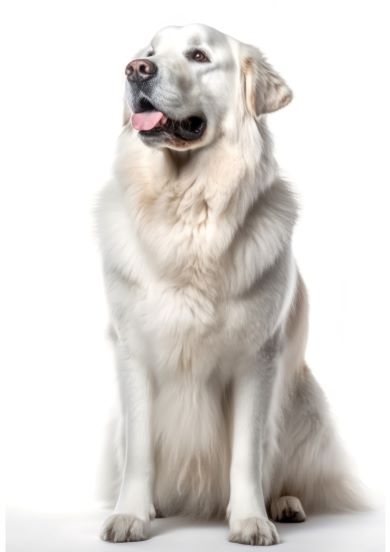Great Pyrenees Traits & Characteristics
Introduction
As a long-time enthusiast of large dog breeds, the Great Pyrenees holds a special place in my heart. Their majestic appearance coupled with a gentle and protective nature makes them an excellent choice for both rural and suburban families. Let’s dive deep into understanding the unique traits and characteristics of this magnificent breed.
Overview of the Great Pyrenees Breed
The Origin Story
Ever wondered where these gentle giants come from? The Great Pyrenees breed hails from the Pyrenees Mountains, which border Spain and France. They were primarily bred as livestock guardian dogs, exhibiting a strong instinct to protect, which holds true even today.
Physical Characteristics
Size and Weight
When I say ‘giant’, I mean it quite literally. The Great Pyrenees males can grow up to 70 to 115 pounds in weight and up to 27 to 32 inches in height. Females tend to be a bit smaller, ranging between 85 and 100 pounds.
Coat and Colors
Great Pyrenees flaunt a stunning thick double coat that’s primarily white, sometimes with markings of gray, reddish-brown, tan, or badger.
Temperament and Personality Traits
General Disposition
Don’t let their size intimidate you; the Great Pyrenees are known for their calm, well-mannered, and gentle temperament. They are fiercely protective when it comes to their family but are equally comfortable lounging around.
Interaction with Children and Other Pets
Do Great Pyrenees make great family dogs? The answer is a resounding yes. They are known to be very gentle with children and tolerant towards other pets.
Care and Health Considerations
Exercise Needs
While they’re not as active as some breeds, Great Pyrenees do require daily exercise to maintain a healthy weight and disposition. Remember, they’re working dogs at heart!
Grooming and Maintenance
Their luxurious coat requires a good brushing at least once a week to prevent matting and tangling. They’re known to shed quite heavily, especially during the spring.
Potential Health Issues
Being a large breed, they are prone to certain health conditions like hip dysplasia, bloat, and certain eye disorders.
Training and Socialization
Training Techniques
Training a Great Pyrenees can be a task because they’re quite independent. A patient and consistent approach works best. Reward-based training methods have shown great success.
Socialization Practices
Early socialization helps a Great Pyrenees grow into a well-rounded dog. Exposure to a variety of people, sights, sounds, and experiences is beneficial.
Conclusion
In the world of large breeds, the Great Pyrenees stands tall not just in size, but in its nature too. It’s a breed full of character and charm. Owning one requires commitment, but the rewards are plentiful, filling your life with love and loyalty.
FAQs
- What is the lifespan of a Great Pyrenees?
- A healthy Great Pyrenees typically lives between 10-12 years.
- Are Great Pyrenees good apartment dogs?
- They can adapt to apartment life if adequately exercised, but they thrive better in homes with large, securely fenced yards.
- Do Great Pyrenees bark a lot?
- Yes, they can be quite vocal as barking is their way of alerting their family to anything they perceive as a threat.
- Are Great Pyrenees good for first-time dog owners?
- They can be, but the potential owner should be ready for a high level of commitment towards training, exercise, and grooming.
- Do Great Pyrenees like to swim?
- Some do enjoy water, but not all. It’s best to introduce them to water gradually and always supervise during swimming sessions.




